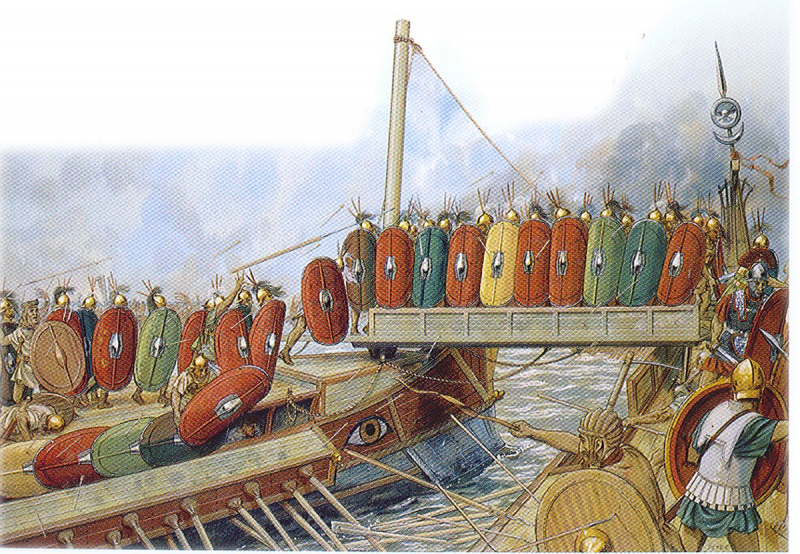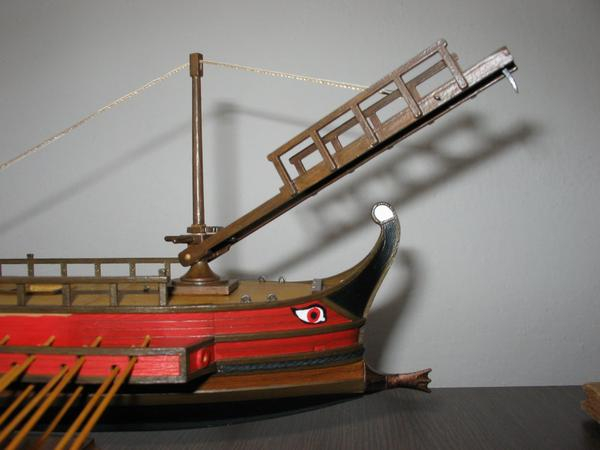The Corvus
Boarding was the most common technique for attacking the Roman fleet. Because Rome gained dominance through a land force, naval fighting was a difficulty for a long time, and lack of ability frequently resulted in defeats. The solution was the "raven" (Corvus), a boarding ramp with two or one spike (resembling a bird's beak, hence the name). It enabled the use of the infantry force at sea and the tactic of fast jumping to the enemy.
During the First Punic War (264-241 BCE), the ancient Romans encountered larger-scale maritime fighting for the first time. Despite the fact that some ships were built using a captured Carthaginian ship as a model, the Roman's and their allies' method of shipbuilding was very different from that of the Carthaginians. Additionally, Carthage's officers, rowers, and hired mercenaries outperformed the opposition in terms of skill.
A new strategy of warfare had to be created due to the difficult circumstances the Roman maritime fleet was in and its early defeats. The person who first used the boarding bridge is unknown to us. Although the dearth of knowledge regarding the inventor's name shows that the Romans did not want to share the success, Adrian Goldsworthy speculates that it might have been a Sicilian or a youthful Archimedes.
The Latin name Corvus does not exist in ancient texts and was most likely derived from Polybius' Greek name - corax. Corvus was approximately 11 meters long and 1.2 meters wide. On either side, there was a knee-high railing. The deck was joined to a 7-meter-tall column in the center. The platform was rotated using ropes and pulleys, allowing it to be lowered to the left or right side and forward.
The Battle of Cape Mylae in 260 BCE saw the first application of corvus. The Carthaginian commanders ignored the enigmatic constructions emerging on the opposing ships because they had superior navigational abilities, which the plodding, inexperienced Roman fleet lacked. However, as soon as the piers descended, containing a total of thirty Phoenicians, the prevailing Roman naval forces changed the maritime conflict into a land fight, shattering their optimism. According to a number of reports, Carthage was beaten and suffered the loss of 30 to 50 ships.











